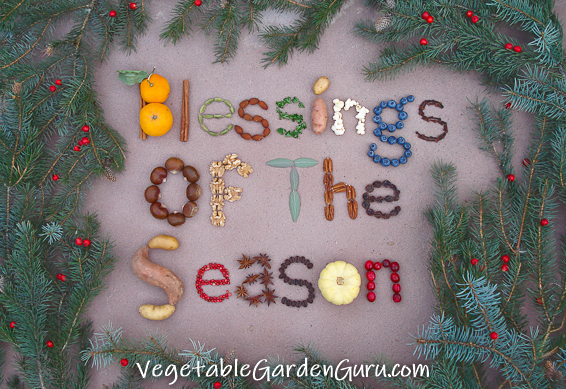| Back to Back Issues Page |
 |
|
Under the Arbor Issue 34 December 21, 2022 |
In This Issue:~ Thoughts on The Return of the Light ~~ Pleasure vs. Happiness ~~ How to "Garden" in the Dead of Winter ~
Thoughts on The Return of the LightHappy winter solstice! While officially the first day of winter, it's also the turning point where the days begin getting longer again. (And for my readers in the southern hemisphere, the first day of summer is certainly something to celebrate, too!).Representing the "Return of the Light", winter solstice holds hope and promise for brighter things to come, which I think many of us could use a dose of right now. Many people have been feeling the darkness in a variety of ways, and for some it's been easy to fall into despair or to succumb to the ever-present "weapons of mass distraction".
Pleasure vs. HappinessBut at least after solstice and Christmas have passed, (hopefully!) our inboxes will no longer be flooded with emails trying to sell us stuff. Marketers have become masters of manipulating brain chemistry. They know that buying (and giving) stuff floods the brain with a hit of dopamine, which we experience as a rather shallow, short-term, feel-good satisfaction that we call pleasure. Dopamine drives both action and satisfaction, and is a key mediator in all manner of addictions.But happiness is something different. It is much deeper and more enduring than pleasure. It doesn't come from the dopamine hit of buying stuff (or having experiences), but instead is related to the deeper satisfactions that come from being creative, engaged, connected, fulfilled and/or participating in something greater than ourselves. It is related to serotonin rather than dopamine. And too much dopamine actually inhibits serotonin production. So what the heck does this have to do with gardening? Gardening is not driven by the dopamine cycle. There is no instant gratification. Great gardeners know they are in partnership with something bigger than themselves, that they are participating in deeper rhythms of life. Even when the seed catalogs start arriving in January, (which do bring with them a certain "Buy me, buy ME!" dopamine hit) the well-known delay between impetus and satisfaction largely shuts down the dopamine cycle. Tool and seed lust are dampened by knowing that the satisfactions they bring will not arrive until spring. Caring for a garden, making a relationship with it, is a great way to physically and symbolically embrace all of creation and channel Love into the world. If we see our gardens as a way and a means to support the lives of those creatures (microbes, worms, bees, birds, et al.) that make up the larger ecosystem of which we are a part, we experience the more fulfilling sense of happiness. It's becoming apparent that living things around the globe are suffering from humankind's overconsumption, and gardening in sync with nature is one way to remain open, loving and engaged (serotonin) rather than closed, isolating/insulating and distracted (dopamine). Ecological/regenerative gardening is both physically and spiritually healing, for ourselves AND the larger ecosystem. I encourage myself, and all of us, not turn a blind eye or shut down our hearts to the suffering of life on planet Earth, but rather to keep our hearts open so that Love, that most precious and ineffable substance, can flow into the world. By itself that Love will help, but It can also empower us to take whatever action we can, no matter how small, to channel Love into the world. "Everything that slows us down and forces patience, everything that sets us back into the slow circles of nature, is a help. Gardening is an instrument of grace." How to "Garden" in the Dead of WinterHere are some fun things we can do when it is freezing outside and tomatoes are growing only in our imaginations:
DedicationVegetable Garden Guru is dedicated to the renewal of regenerative, sustainable, organic vegetable gardening around the world. May we become gardeners of healthful, nutrient-dense food, careful stewards of soil, and may the plants we tend remind us to always keep growing toward the Light.
|
| Back to Back Issues Page |

